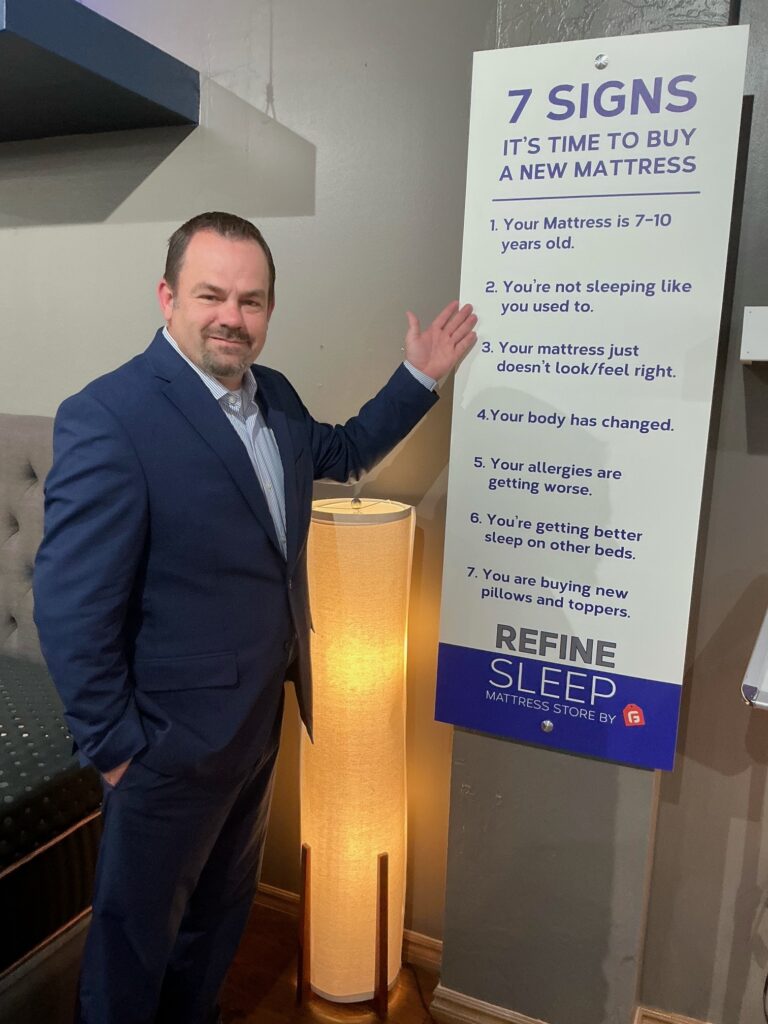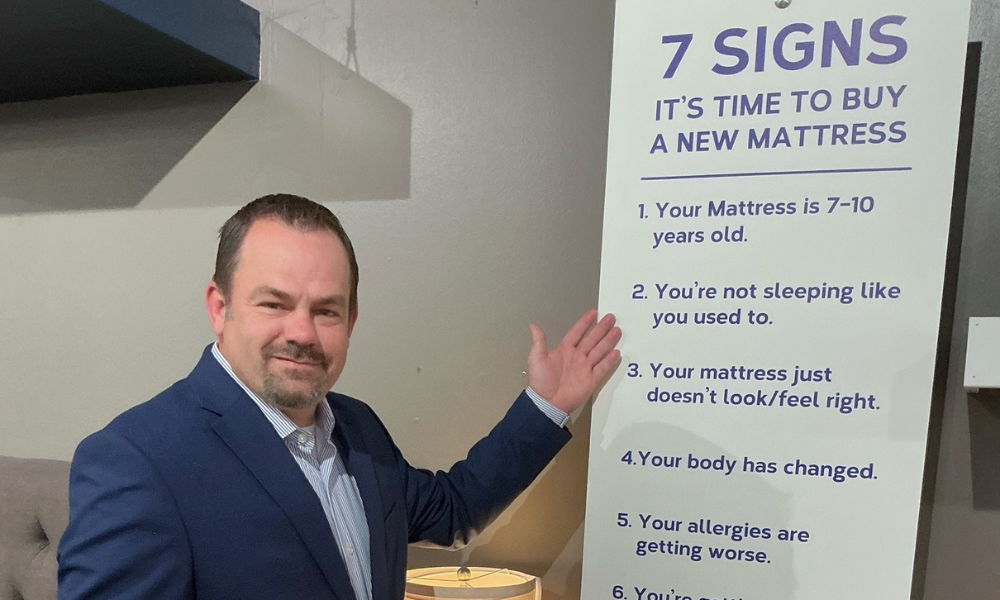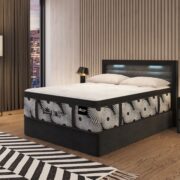My mattress travels took me last week to Oklahoma City, Oklahoma, where I figured a good steak would be on offer. It was — a succulent 6-ounce filet mignon at Mahogany, paired with tasty chive-whipped potatoes — but I found something even more filling on my trip: a key to boosting mattress sales.
But first, a little background.
I was touring Galleria Furniture & Mattress Outlet with Englander CEO Lou Paige, who is out in the field these days visiting key Englander dealers and prospects. He introduced me to the team at Galleria Furniture, which has a strong commitment to the mattress category and is a longtime Englander dealer.
Galleria’s Don Bilyeu, general manager, and Adam Dilley, operations manager, were showing us the Refine Sleep mattress store inside Galleria’s flagship location, located on the I-40 Service Road. Several things about the bedding presentation caught my attention, and I’ll be talking more about this strong retailer in a future story.

But this week I want to highlight a straightforward and powerful step the retailer takes to encourage mattress sales: It helps consumers determine when to buy a new mattress.
On the wall of the mattress store is a sign that says: “7 signs it’s time to buy a new mattress.” Those signs are:
+“Your mattress is 7-10 years old.”
+“You’re not sleeping like you used to.”
+“Your mattress just doesn’t look/feel right.”
+“Your body has changed.”
+“Your allergies are getting worse.”
+“You’re getting better sleep on other beds.”
+“You are buying new pillows and toppers.”
That’s a great list, and it’s one that gives consumers specific things to watch for that suggest they might need a new mattress.
The industry’s problem is that mattresses wear out gradually, and they often don’t look worn out outside when they are, in fact, worn out inside. Put another way, mattresses don’t come with pop-up timers that say: Time to replace me.
Yet worn-out mattresses are the key purchase trigger for primary bedroom mattress purchases, according to Consumer Insights Now research that we conducted earlier this year. Fully 75% of our survey respondents said that they were shopping for a new primary bedroom mattress because “my old mattress is worn out/broken.”
The second most important purchase trigger — a desire to upgrade to a better mattress — was cited by just 33% of shoppers. Several other purchase triggers rounded out the list, most cited by fewer than 10% of the mattress shoppers.
So the most important purchase trigger, by a very wide margin, is a worn-out mattress. But how to help consumers determine if their mattress is worn out?
One of the seven signs identified by Galleria Furniture is getting better sleep on other beds. I’ve heard that expressed over the years with the admonition to see how your sleep on your current mattress compares to how well you sleep on a hotel mattress. Those are useful measures.
The key is that you must find a point of comparison. Mattresses, like our bodies, age gradually and we get used to our worn-out mattresses. Subjecting our mattresses to a good comparison test is a great idea.
Galleria Furniture highlights that point with its clever “7 signs” display.
To sell more mattresses, our industry simply must encourage consumers to put their current mattresses to the test and see how they measure up.
Nice job, Galleria Furniture!




